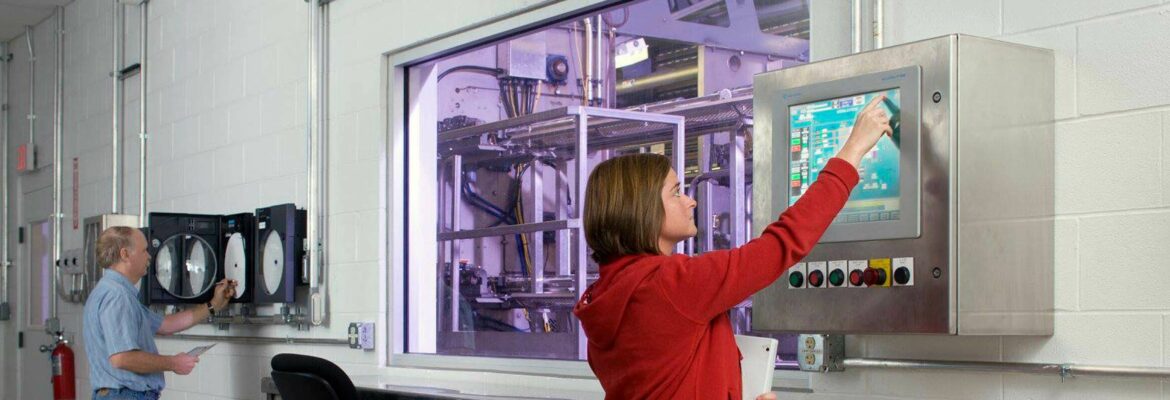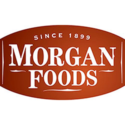Morgan Foods International
Magnitude Angles for SAP provides a transformative approach to analytics and exposes the many benefits of SAP S/4HANA


Morgan Foods grew from a modest canning company, founded in 1899 in Austin, Indiana, into one of the three largest condensed soup manufacturers by 1992. Today, the company focuses on private-label soup and other mixed-ingredient products for customer’s nationwide to sell as store brands. It is the largest private label soup manufacturer in the United States.
Challenges
The Plan For Growth
As Morgan Foods International (MFI) prepared for an ambitious goal to grow their business rapidly over the next three years, they understood that their enterprise architecture, including their instance of SAP ECC which had changed little since it was implemented 17 years earlier, would need to be revitalized.
The team decided to begin by addressing business processes that had not been properly implemented in SAP to support the growth plans. The multi-prong plan focused on improving product lifecycle management (by implementing SAP PLM), modernizing their approach to logistics, and what Steve Hankins, CFO at Morgan foods describes as a “plant floor remediation project.”
MFI dedicated time and resources to reformulating a few key business processes. They rewrote all of their Radio Frequency (RF) transactions and retrofit their warehouse facilities to implement the proper stock transfer procedures that would enable their business logistics processes to support the multi-facility operation they had become. The plant floor remediation project entailed reworking all of the company’s Production Supply Areas (PSAs), all of the resource definitions, and rewriting every recipe manufactured in their facilities.
Hankins reflects, “we were kind of working both ends toward the middle, and, in the middle, was a combination of our business forecasting processes and our production planning processes.” MFI needed a better way to plan the annual operating plan and manage those details all the way through execution. They investigated a few software products to help them achieve this and decided that the ideal solution for them would be a combination of SAP’s Integrated Business Planning and Production Planning and Detailed Scheduling (PP/DS) product. This solution would allow them to determine the resources and dates/times for carrying out operations, while taking resource and product availability into consideration. However, implementing PP/DS would require an ERP upgrade to SAP S/4HANA.
The Big Move To S/4HANA
When S/4HANA was released by SAP in 2015, it represented a major shift from the company’s R/3 product because it took advantage of the company’s new in-memory database HANA. Since its release, adoption of the S/4HANA platform had been slow – driven, in part by fears regarding the complexity and cost associated with upgrades.
MFI undertook a study of their existing architecture to determine the level of difficulty that a migration would entail, because, as Hankins points out, the golden rule for upgrading any software is “don’t break the business.” Ultimately, the MFI team determined that the opportunities afforded by migrating to S/4HANA, particularly the access it provided to PP/DS, outweighed the risks and they decided to move forward with the migration process.
According to Hankins, MFI’s migration to S/4HANA went so smoothly that he compared it to a “glorified upgrade.” He partially credits the work that MFI undertook in advance to upgrade business processes as one of the keys to the success of the migration. The other factor that impacted the ease of MFI’s upgrade was the fact that their instance of SAP contained very few customizations.
Solution
In order to help tame the complexity of SAP and provide insights to business users Morgan Foods implemented Magnitude Angles for SAP (previously Every Angle) in 2003. With a small IT team – outsourcing much of the IT management and hardware infrastructure necessary for the S/4HANA upgrade to a private cloud vendor – MFI needed to access financial and operational reports. Every Angle provided the food manufacturer with actionable insights about their business without overburdening the IT staff.
“Although SAP contains a wealth of information,” explains Hankins, “you can’t easily get information out in a report format. [Angles for SAP] creates an abstraction layer that Morgan Foods has made extensive use of over the years, and is embedded in the way we do things today.”
As part of the preparation to move to S/4HANA, the team at MFI worked with consultants from Magnitude to perform a Health Check on their existing SAP instance in order to determine how they could ensure that the data they migrated was as clean, accurate, and up-to-date as possible. The process included creating Angles, or views into SAP data, to review areas that might contain inaccurate, duplicative, or incomplete data within three major areas: Material Master, Vendor Master, and Customer Master. The Angles, created directly within the Angles for SAP interface, reviewed master data within each area and displayed the results – along with data fields that were incorrect, missing key information or terms, or contained values that needed to be removed, such as discontinued items that had not been deleted from SAP. The dashboards enabled the MFI team to clean up the data they planned to migrate to S/4HANA, and the dashboards remain available to the MFI even after the upgrade. “It’s a value-add that we would recommend to companies looking to upgrade to S/4HANA. It’s something that we would maintain regularly – even without the upgrade, said Christy Roberts, Finance Manager at Morgan Foods.
S/4HANA and Angles for SAP
One of the many benefits available to companies that implement S/4HANA is more advanced access to reporting and analytics, including the ability to process larger data sets and offer business users easier access data stored within the SAP ERP. MFI does take advantage of the Fiori interface and pre-configured Fiori widgets that offer more advanced embedded analytics. However, Hankins reveals most users still use the SAP GUI and Angles reporting tools over the Fiori interface – due, in large part, to their comfort level over years of use compared to the new interface.
“Underpinning each Fiori widget is a CDS view, which is not dissimilar to the abstraction layer that Angles provides,” says Hankins. “If a CDS view exists that matches your immediate need, then you’re probably good to go. Otherwise, you have to create a CDS view to fit .”
Roberts adds that the reporting capabilities in S/4HANA are limited by the current availability of CDS views. “It takes time to get the information you need in a report format. Right now, it’s not as much of an out of the box solution as Angles, with the ability to pull reports automatically and enhance report data with additional fields and parameters.”
Both Hankins and Roberts agreed that S/4HANA offers tremendous opportunities, however, the easy-to-use interface and reporting capabilities of Angles provides an even deeper level of rich SAP data accessible on S/4HANA. “We’ve got a lot of business processes built around Angles,” Hankins said. “Because of that, we never considered implementing S/4HANA without Angles. Our upgrade simply would not have been as successful without it.”
Angles for SAP, Certified for Integration with HANA databases by SAP, can enhance your S/4HANA ecosystem with SAP simplification, built-in intelligence, execution of HANA views in the Angles GUI. HANA may provide data faster, but it doesn’t make it any smarter. That’s where Angles for SAP comes in.
We never considered implementing SAP S/4HANA without Magnitude Angles for SAP. Our upgrade simply would not have been as successful without it.